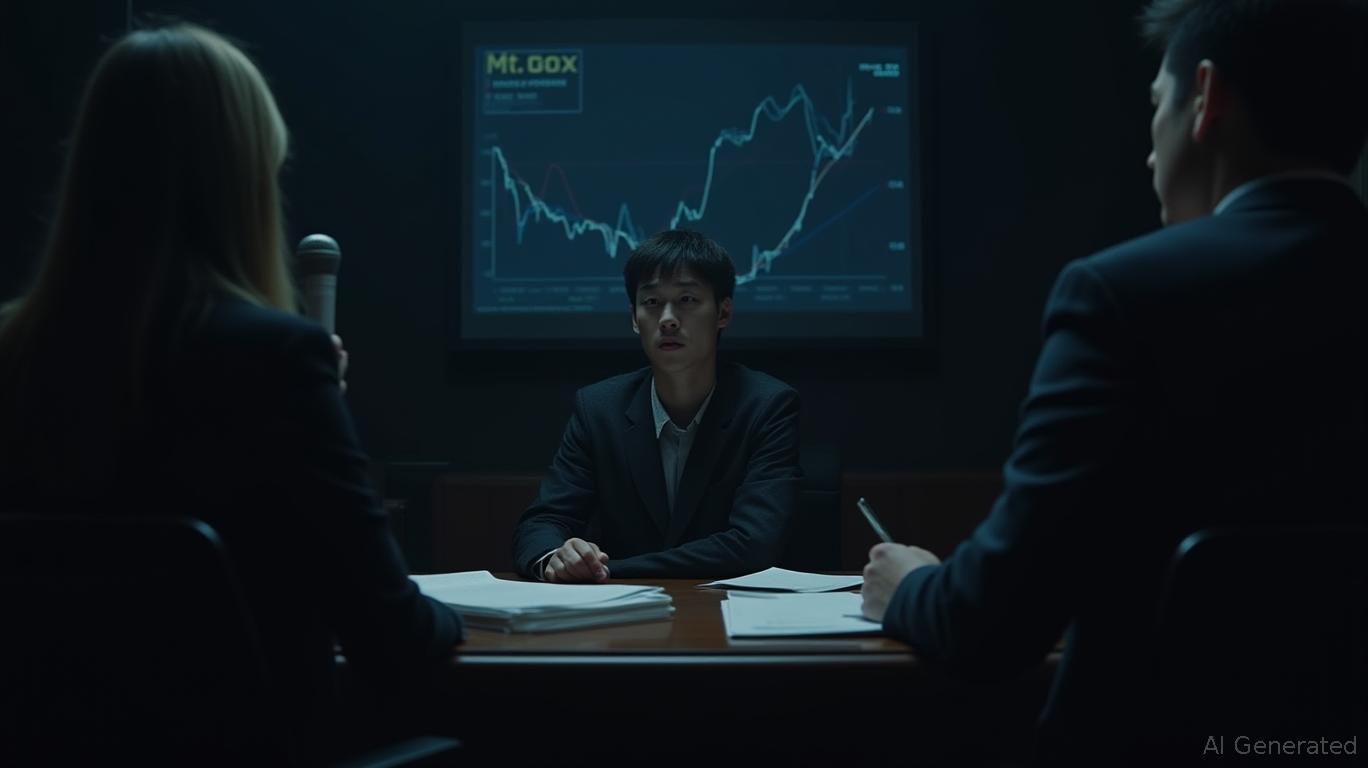U.S.-China Trade Agreement Calms International Markets, Prevents Further Tariff Increases
- U.S. and China agree to delay 100% tariffs on Chinese goods and extend rare earth export controls by one year, averting Trump's November 1 threat. - Framework includes China resuming U.S. soybean purchases, addressing fentanyl supply chains, and potential AI cooperation with U.S. tech firms like Nvidia. - Preliminary deal stabilizes trade tensions ahead of Trump-Xi summit in South Korea, though unresolved issues like Taiwan and Jimmy Lai's case remain. - Global markets benefit from reduced trade uncertai
China and the United States have come to an initial trade understanding that will prevent a planned 100% tariff increase on Chinese imports and postpone controversial restrictions on rare earth exports, U.S. Treasury Secretary Scott Bessent said, as cited by
Bessent called the framework "highly significant," noting that China has agreed to put off its expanded rare earth licensing rules for another year while reconsidering the policy,

The deal also involves China agreeing to restart large-scale purchases of U.S. soybeans, a major priority for American agriculture, and to address supply chains linked to fentanyl that contribute to the opioid crisis in the U.S., according to
Chinese authorities have been reserved, refraining from sharing details about the breadth of the deal. Li Chenggang acknowledged that both sides had reached a preliminary agreement to extend the current trade ceasefire, set to expire November 10, and to continue talks on fentanyl and export controls, The Economic Times noted. The results of these negotiations are crucial for the global economy, as the U.S.-China trade partnership is a key pillar of worldwide financial stability.
Experts believe the agreement demonstrates both countries’ desire to prevent further economic shocks. Economists at ING expect a favorable outcome, pointing to a "softening of language" and Trump’s public statements about achieving a "fantastic deal," according to the
The framework also paves the way for future collaboration on artificial intelligence, with Bessent mentioning ongoing talks involving U.S. technology companies like Nvidia, as reported by Cryptopolitan. Nonetheless, larger geopolitical challenges—including the Taiwan issue and the detention of Hong Kong media mogul Jimmy Lai—remain unresolved and could complicate future relations.
Trump and Xi are scheduled to meet in South Korea on Thursday, with additional discussions planned in both China and the U.S. in early 2026, according to Cryptopolitan. Whether this framework succeeds will depend on the leaders’ ability to turn these initial agreements into concrete, enforceable measures. For now, the suspension of tariffs and rare earth disputes provides temporary relief for companies and investors navigating one of the world’s most significant trade relationships.
Disclaimer: The content of this article solely reflects the author's opinion and does not represent the platform in any capacity. This article is not intended to serve as a reference for making investment decisions.
You may also like
BNB News Update: BNB's Token Burn Approach Fuels Worldwide Acceptance as Countries Adopt BNB for Central Bank Digital Currencies and National Reserves
- BNB Foundation executed its 33rd quarterly burn, destroying $1.208 billion in BNB to reduce supply and boost token value. - Kyrgyzstan launched a BNB Chain-based stablecoin (KGST) and CBDC, with Binance's CZ Zhao meeting President Zhaparov to advance adoption. - x402 protocol's BNB Chain expansion drove $810M market cap growth via gasless payments, while BNB surged 2.8% amid U.S.-China trade optimism. - Institutional adoption accelerated as Bhutan and Pakistan announced BNB-backed reserves, positioning t

Bitcoin Updates: Mt. Gox Delays Until 2026: Widespread Challenges in Cryptocurrency Reimbursements
- Mt. Gox's trustee delays creditor repayments to October 31, 2026, citing administrative, legal, and technical challenges in distributing $4B in BTC and fiat. - The extension aims to prevent market destabilization by avoiding BTC liquidation, aligning with industry trends in managing crypto bankruptcy assets. - 19,500 creditors received partial repayments, but unresolved claims persist due to documentation gaps and evolving regulatory hurdles. - Market stability was maintained post-announcement, though lo

Ethereum Updates: Haust Network Connects Ethereum to DeFi, Enhancing Access with Mainnet Debut
- Haust Network launches Ethereum-compatible mainnet with AggLayer integration, completing its three-stage roadmap's first phase. - Platform introduces cross-chain wallet, real-time oracle, and passwordless account recovery via Account Abstraction to simplify DeFi access. - $HAUST token now tradeable on Uniswap and Haust's DEX, with Phase 2 planning AI-powered tools and DAO governance expansion. - Network aims to bridge Ethereum's infrastructure with gas-efficient solutions, aligning with DeFi's $1T+ month

Canada's Approach to Stablecoins: Navigating Innovation and Strict Regulation
- Canada accelerates stablecoin regulations to balance innovation with consumer protection, aligning with global digital asset trends. - Growing data center investments in Toronto/Montreal (140+ facilities by 2024) create infrastructure for stablecoin ecosystems. - Zelle explores stablecoins for cross-border payments while Binance dominates 67% of global stablecoin liquidity through Asia expansion. - Regulatory focus includes AI-driven AML monitoring and risk mitigation for volatility, transparency, and co
